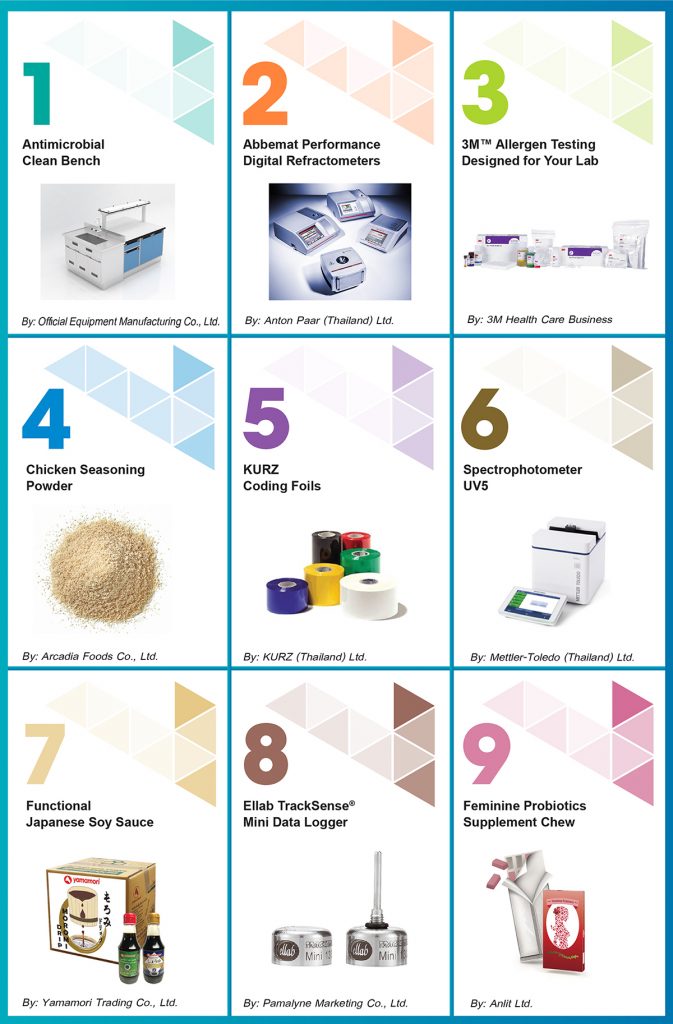
The Most Recently Enforced Food Regulations Notification of the Ministry of Public Health No.391 (B.E.2561 (2018)) Issued by virtue of the Food Act B.E.2522 Re: Prescribed foods which are prohibited to be produced, imported or sold
See What’s New in the Star Items August 2019
ร่วมแสดงความคิดเห็น U Share V Care เดือน สิงหาคม 2562
Method Validation Guidelines for Chemical Analysis of Food Matrix as Requirement of ISO/IEC17025
Winner of U Share V Care JUNE 2019

U Share V Care JUNE 2019 ประกาศฉบับ AUG 2019
PTT Privilege Card worth THB500 (Only 2 Lucky Winners)
1. Pramuan Punpan
Assistant Production Section Manager
Thai Identity Sugar Factory Co., Ltd.
2. Kittipong Tangverapornpong
Engineer Manager
Tanaosree Green Food Co., Ltd.
สสว. ผนึกสถาบันอาหาร ปั้น 5 ผลิตภัณฑ์ต้นแบบ ยกระดับเครือข่าย SME กลุ่มสับปะรด-กระเทียม
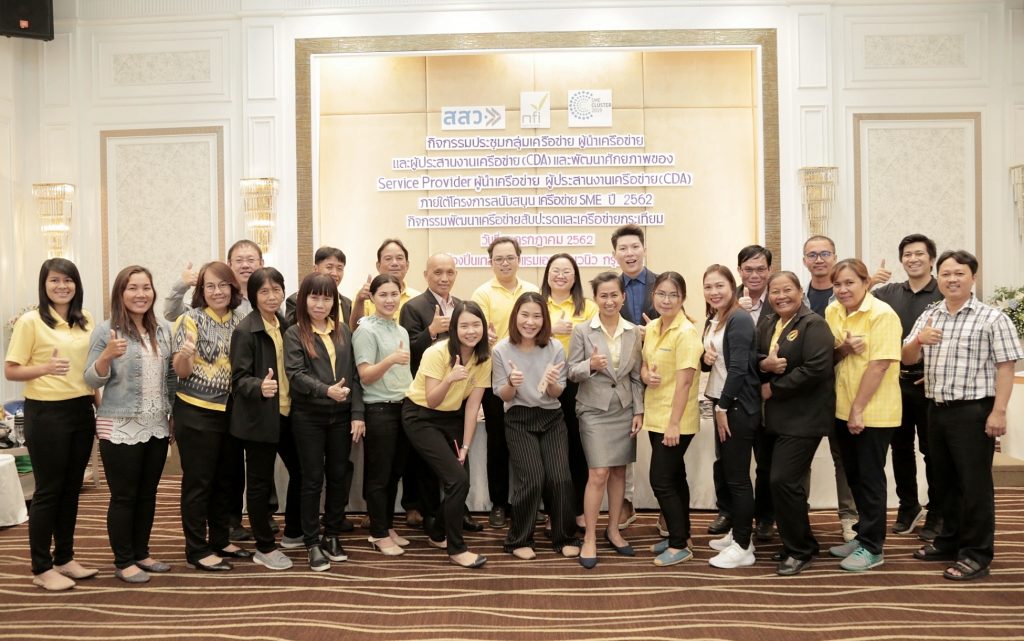
สสว. ร่วมกับสถาบันอาหาร หน่วยงานเครือข่ายกระทรวงอุตสาหกรรม อวดโฉม 5 ผลิตภัณฑ์ต้นแบบ ฝีมือสมาชิกเครือข่าย SME ที่เข้าร่วม “กิจกรรมพัฒนาเครือข่ายสับปะรดและเครือข่ายกระเทียม ภายใต้โครงการสนับสนุนเครือข่าย SME ปี 2562” ได้แก่ ผงสับปะรด สับปะรดแช่เยือกแข็ง สับปะรดอบน้ำผึ้ง ไอศกรีมไวน์สับปะรด และกระเทียมผง ตามแผนพัฒนาเครือข่ายที่มุ่งส่งเสริมให้ใช้เทคโนโลยีและนวัตกรรม ช่วยพัฒนาคุณภาพการผลิต การแปรรูป การเก็บรักษา การออกแบบ และสร้างมูลค่าเพิ่มให้ผลิตภัณฑ์อย่างสร้างสรรค์ ล่าสุดจัดอบรมพัฒนาศักยภาพการดำเนินธุรกิจให้ผู้นำเครือข่าย SME 15 ราย เป็นตัวแทนจาก 5 กลุ่มเครือข่าย รวม 11 จังหวัด เผยเตรียมติวเข้มความรู้เรื่องการตลาดแบบครบวงจรทั้งออนไลน์และออฟไลน์ให้สมาชิกราว 700 ราย เพื่อต่อยอดขยายผลในเชิงพาณิชย์ พร้อมผลักดันให้นำผลิตภัณฑ์ออกทดสอบตลาด และจับคู่เจรจาธุรกิจทั้งในและต่างประเทศ ตั้งเป้าเจาะตลาดญี่ปุ่น ฐานตลาดส่งออกอาหารสำคัญของไทย

นางลักขณา ตั้งจิตนบ ผู้อำนวยการฝ่ายส่งเสริมธุรกิจ SMEs สำนักงานส่งเสริมวิสาหกิจขนาดกลางและขนาดย่อม (สสว.) กล่าวถึงความคืบหน้าของ “กิจกรรมพัฒนาเครือข่ายสับปะรดและเครือข่ายกระเทียม ภายใต้โครงการสนับสนุนเครือข่าย SME ปี 2562” ซึ่งได้มอบหมายให้สถาบันอาหาร หน่วยงานเครือข่ายกระทรวงอุตสาหกรรม ดำเนินการมาตั้งแต่เดือนมีนาคมที่ผ่านมาว่า ภายหลังจากได้จัดอบรมและพัฒนาศักยภาพเชิงลึกให้แก่สมาชิกเครือข่าย และผู้นำเครือข่าย ด้านการพัฒนากระบวนการผลิตและการบริหารจัดการ โดยการนำนวัตกรรมหรือเทคโนโลยีมาสนับสนุน เพื่อยกระดับศักยภาพการผลิต ลดต้นทุนการผลิต ปรับปรุงกระบวนการเพาะปลูกเพื่อให้ได้ผลผลิตมากขึ้น หรือปรับปรุงกระบวนการแปรรูปเพื่อให้เป็นผลิตภัณฑ์ที่มีคุณภาพและสามารถจัดจำหน่ายได้ รวมทั้งการจัดทำมาตรฐานการผลิตเพื่อส่งออก และมาตรฐานรสชาติอาหาร ซึ่งได้ผลเป็นที่น่าพอใจ
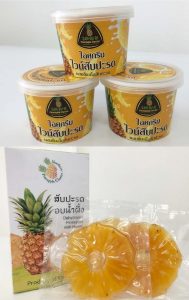
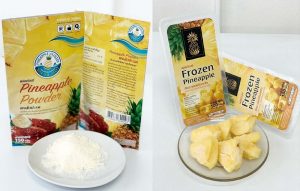
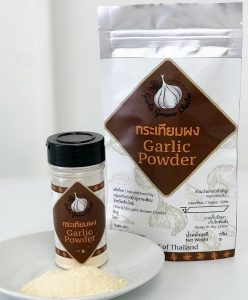
“สมาชิกเครือข่ายต่างๆ ได้ร่วมกันพัฒนาผลผลิตสับปะรดและกระเทียม เป็นผลิตภัณฑ์แปรรูปต้นแบบที่มีศักยภาพในการแข่งขันได้ทั้งหมด 5 ผลิตภัณฑ์ แบ่งเป็นผลิตภัณฑ์จากสับปะรด 4 ผลิตภัณฑ์ ได้แก่ 1) “ผงสับปะรด” สำหรับหมักเนื้อนุ่ม เพื่อปรุงอาหาร ใช้เทคโนโลยีการทำแห้งแบบแช่เยือกแข็งเพื่อคงคุณสมบัติของเอนไซม์สับปะรด จาก“กลุ่มเครือข่ายสับปะรดสินสมุทร” (ชลบุรี ระยอง และตราด) 2) “สับปะรดแช่เยือกแข็ง”พร้อมรับประทาน ใช้เทคโนโลยีแช่เยือกแข็ง จาก “กลุ่มเครือข่ายสับปะรดสยามโกลด์” (ประจวบคีรีขันธ์) 3) “สับปะรดอบน้ำผึ้ง”(แช่อิ่มอบแห้ง) ใช้เทคโนโลยีการแช่อิ่ม และนำมาอบแห้งเพื่อยืดอายุผลิตภัณฑ์ จาก “กลุ่มเครือข่ายสับปะรดภาคเหนือ” (พิษณุโลก อุตรดิตถ์ และอุทัยธานี) 4) “ไอศกรีมไวน์สับปะรด” จาก “กลุ่มเครือข่ายสับปะรด 3 บุรี” (ราชบุรี เพชรบุรี และกาญจนบุรี) สำหรับผลิตภัณฑ์จากกระเทียม 1 ผลิตภัณฑ์ ได้แก่ “กระเทียมผง” สำหรับปรุงอาหารใช้นวัตกรรมการทำแห้งแบบแช่เยือกแข็ง เพื่อคงกลิ่นและรสชาติของกระเทียม จาก“กลุ่มเครือข่ายผู้ปลูกกระเทียมจังหวัดเชียงใหม่”
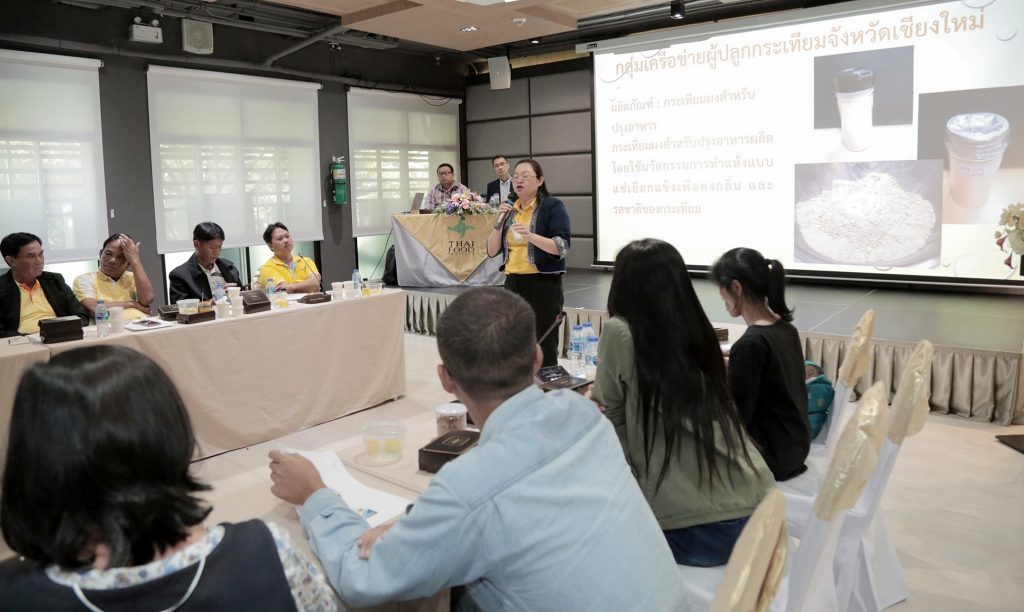
ล่าสุดได้จัดอบรมผู้นำเครือข่ายหรือผู้ประสานเครือข่าย (Cluster Development Agent; CDA) จำนวน 15 ราย ซึ่งเป็นตัวแทนจากเครือข่ายสับปะรด 4 กลุ่ม และเครือข่ายกระเทียม 1 กลุ่ม ปัจจุบันมีสมาชิกรวมราว 700 ราย จาก 11 จังหวัด เพื่อพัฒนาศักยภาพในการดำเนินธุรกิจด้านต่างๆ ครอบคลุมถึงการเสริมสร้างความเข้มแข็งให้แก่เครือข่าย โดยให้ข้อมูลความรู้ที่เป็นประโยชน์ต่อการร่วมมือและส่งเสริมแนวคิดในการพัฒนาเครือข่ายอย่างต่อเนื่อง และเชื่อมโยงความร่วมมือระหว่างเครือข่ายกับหน่วยงานอื่นๆ ที่เกี่ยวข้อง

นางนิตยา พิระภัทรุ่งสุริยา รองผู้อำนวยการสถาบันอาหาร หน่วยงานเครือข่ายกระทรวงอุตสาหกรรม กล่าวว่า หลังจากนี้จะเป็นการจัดอบรมให้ความรู้เรื่องการตลาดแบบครบวงจรทั้งออนไลน์และออฟไลน์เพื่อต่อยอดเชิงพาณิชย์ ขณะเดียวกันเตรียมสร้างการรับรู้ให้กับผู้บริโภคทั้งในประเทศและต่างประเทศได้รู้จักผลิตภัณฑ์ต้นแบบทั้ง 5 ผลิตภัณฑ์ รวมทั้งผลิตภัณฑ์แปรรูปอื่นๆ ของสมาชิกเครือข่ายที่ได้รับการยกระดับด้านมาตรฐานการส่งออกเรียบร้อยแล้ว เพื่อเพิ่มช่องทางการตลาดใหม่ๆ ซึ่งมีแผนจะนำผลิตภัณฑ์ดังกล่าวออกทดสอบตลาด และจับคู่เจรจาธุรกิจภายในเดือนกันยายนนี้ โดยต่างประเทศมีญี่ปุ่นเป็นตลาดเป้าหมาย เนื่องจากในภาพรวมญี่ปุ่นเป็นตลาดส่งออกสินค้าอาหารอันดับ 1 ของไทยที่มีศักยภาพ ในปี 2561 มูลค่าการส่งออกอาหารของไทยไปญี่ปุ่นราว 132,130 ล้านบาท หรือคิดเป็นร้อยละ 12.8 ที่สำคัญไทยมีจุดแข็งที่เป็นผู้ผลิตและส่งออกสับปะรดกระป๋องและน้ำสับปะรดรายใหญ่ของโลกที่มีมาตรฐานการผลิตในระดับสากล มีคุณภาพเป็นที่ยอมรับในตลาด โดยโรงงานแปรรูปสับปะรดของไทยมีทั้งหมด 62 แห่ง ร้อยละ 74 เป็นผู้ประกอบการ SME
ในปี 2561 เฉพาะสับปะรดกระป๋อง ไทยเป็นประเทศผู้ส่งออกอันดับ 1 ของโลก มีส่วนแบ่งการตลาดสูงถึงร้อยละ 40.8 (มูลค่า 12,933 ล้านบาท) ตลาดส่งออก 5 อันดับแรก ได้แก่ สหรัฐอเมริกา (ร้อยละ 29.43) สหภาพยุโรป (ร้อยละ 26.5) รัสเซีย (ร้อยละ 7.1) จีน (ร้อยละ 3.2) และญี่ปุ่น (ร้อยละ 3.1) ส่วนผลิตภัณฑ์ประเภทอื่นๆ ได้แก่ น้ำสับปะรดเข้มข้น (มูลค่า 3,601 ล้านบาท) สับปะรดแช่อิ่ม/เชื่อม (มูลค่า 2,198 ล้านบาท) สับปะรดสด/อบแห้ง (มูลค่า 332 ล้านบาท) สับปะรดแช่เย็นแช่แข็ง (มูลค่า 38 ล้านบาท) เมื่อรวมผลิตภัณฑ์ทุกประเภท ไทยเป็นผู้ส่งออกอันดับ 2 ของโลก มีส่วนแบ่งการตลาด ร้อยละ 15.1 รองจากประเทศคอสตาริกาที่มีส่วนแบ่งร้อยละ 26.9
‘ไทย ไรซ์ นามา’ ลงพื้นที่แนะนําเทคนิคปลูกข้าว เพิ่มรายได้ ลดต้นทุน ลดโลกร้อน แก่เกษตรกรในจังหวัดสุพรรณบุรี
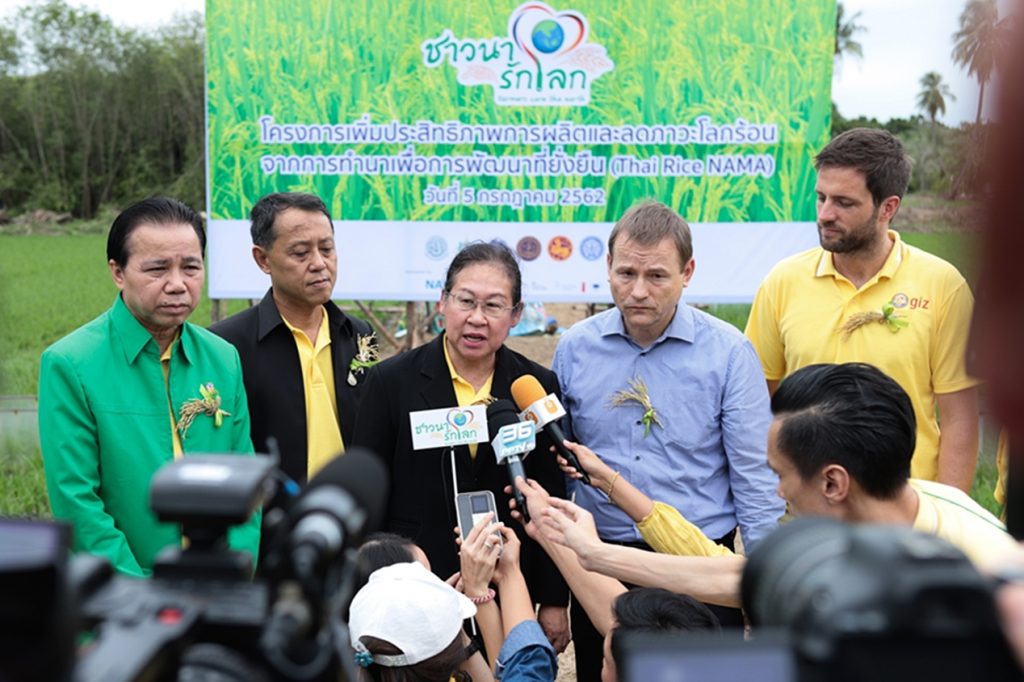
สุพรรณบุรี, 5 กรกฎาคม 2562 – เกษตรกรกว่า 300 รายในจังหวัดสุพรรณบุรี เข้าร่วมงานเปิดตัวโครงการเพิ่มประสิทธิภาพการผลิตและลดภาวะโลกร้อนจากการทํานาเพื่อการพัฒนาที่ยังยืน หรือ ‘ไทย ไรซ์ นามา’ เรียนรู้เทคโนโลยีช่วยเพิ่มผลผลิต ลดต้นทุน
นางสาวดุจเดือน ศศะนาวิน รองปลัดกระทรวงเกษตรและสหกรณ์ กล่าวว่า “โครงการไทย ไรซ์ นามา ผลักดันให้มีการใช้เทคโนโลยีเข้ามาช่วยเพิ่มประสิทธิภาพในการผลิตข้าวให้กับเกษตรกรจํานวน 100,000 ครัวเรือน ในพื้นที่ 6 จังหวัดภาคกลาง ได้แก่ จังหวัดชัยนาท สิงห์บุรี อ่างทอง พระนครศรีอยุธยา ปทุมธานี และสุพรรณบุรี ครอบคลุมพื้นที่ประมาณ 2.8 ล้านไร่ โดยมีเป้าหมายที่จะปรับเปลี่ยนระบบการทํานาในปัจจุบันไปสู่ระบบการทํานาแบบยั่งยืน”
ทั้งนี้ โครงการฯ ได้ร่วมกับธนาคารเพื่อการเกษตรและสหกรณ์การเกษตร (ธ.ก.ส.) พัฒนาเงินทุนหมุนเวียนเพื่อจ่ายค่าบริการปรับพื้นที่ด้วยระบบเลเซอร์ให้แก่เกษตรกร โดยเกษตรกรสามารถผ่อนชําระคืนภายหลังได้ในช่วงระยะเวลา 3 ฤดูปลูก เงินทุนหมุนเวียนนี้จะเชื่อมโยงกับกับสินเชื่อสีเขียวของ ธ.ก.ส. ซึ่งให้เงินทุนแก่ผู้ประกอบการที่ต้องการซื้อเครื่องจักรกลมาใช้ในกิจกรรมการเกษตรที่เป็นมิตรต่อสิ่งแวดล้อมด้วย โดยโครงการคาดการณ์ว่าจะช่วยลดการปล่อยก๊าซเรือนกระจกได้ประมาณ 1.73 ล้านตันคาร์บอนไดออกไซด์เทียบเท่า
เมื่อภาวะโลกร้อนยังคงเป็นเรื่องน่าเป็นห่วงทั่วทุกมุมโลก ฯพณฯ เอกอัครราชทูตเกออร์ก ชมิดท์ เอกอัครราชทูตเยอรมันประจําประเทศไทย ได้เน้นย้ำว่า “เมื่อพูดถึงเรื่องภาวะโลกร้อน เราทุกคนต่างตกอยู่ภายใต้สถานการณ์เดียวกัน เกษตรกรเป็นคนกลุ่มแรกที่ได้รับผลกระทบจากการเปลี่ยนแปลงของสภาพภูมิอากาศ แต่ในขณะเดียวกัน เกษตรกรเองก็สามารถช่วยบรรเทาผลกระทบจากภาวะโลกร้อนได้ ผมรู้สึกดีใจที่พวกเราทุกคนร่วมมือกันหาทางลดการปล่อยก๊าซเรือนกระจกจากการทํานาภายใต้โครงการไทย ไรซ์ นามา และแสดงวิธีการผลิตข้าวรูปแบบใหม่ที่จะช่วยดูแลรักษาธรรมชาติ เพิ่มผลผลิตและรายได้ให้กับเกษตรกร”
นายสุริยัน วิจิตรเลขการ รองผู้อํานวยการโครงการเกษตรกรรมและอาหาร องค์กรความร่วมมือระหว่างประเทศของเยอรมัน (GIZ) ประจําประเทศไทย กล่าวว่า “เทคโนโลยีที่โครงการฯ จะช่วยส่งเสริมให้เกษตรกรผลิตข้าวได้มีประสิทธิภาพมากขึ้นจะมีด้วยกัน 4 วิธี ได้แก่ เทคนิคการปรับหน้าดินด้วยเลเซอร์ ซึ่งช่วยทําให้หน้าดินเรียบเท่ากัน ส่งผลให้เกษตรกรสามารถประหยัดค่าสูบน้ำได้มากถึงร้อยละ 50 เทคนิคการทํานาแบบเปียกสลับแห้งที่ช่วยให้ระบบรากข้าว การแตกกอ และความสมบูรณ์ของข้าวดีขึ้น เทคนิคการใช้ปุ๋ยตามค่าวิเคราะห์ดิน ช่วยลดต้นทุนการใช้ปริมาณปุ๋ยที่มากเกินความจําเป็น และรักษาแร่ธาตุในดิน ทําให้ดินมีความอุดมสมบูรณ์มากขึ้น และวิธีสุดท้ายคือ การจัดการฟางและตอซัง ซึ่งช่วยสนับสนุนให้เกษตรกรหยุดเผาเศษวัสดุเหลือใช้ในนาข้าว ลดฝุ่นละอองและหมอกควัน ในขณะเดียวกัน เกษตรกรสามารถนําฟางข้าวไปแปรรูปเพิ่มมูลค่าได้ การใช้เทคนิคเหล่านี้นอกจากจะทําให้เกษตรกรลดต้นทุนในการปลูกข้าวได้แล้ว ยังช่วยเพิ่มผลผลิตข้าวและได้ข้าวที่มีคุณภาพดีขึ้น อีกทั้งยังมีการสนับสนุนการเข้าถึงตลาดจากภาคธุรกิจ ซึ่งจะช่วยให้เกษตรกรมีรายได้เพิ่ม
ทั้งนี้ โครงการไทย ไรซ์ นามา เป็นโครงการที่เกิดขึ้นภายใต้ความร่วมมือหลักระหว่างกระทรวงเกษตรและสหกรณ์ และองค์กรความร่วมมือระหว่างประเทศของเยอรมัน (GIZ) ประจําประเทศไทย ได้รับการสนับสนุนงบประมาณจํานวน 14.9 ล้านยูโร (คิดเป็นเงินไทยประมาณ 530 ล้านบาท) จากรัฐบาลประเทศเยอรมนี รัฐบาลสหราชอาณาจักร รัฐบาลเดนมาร์ก และสหภาพยุโรป ผ่าน NAMA Facility มีระยะเวลาการดําเนินโครงการ 5 ปี (ตั้งแต่ พ.ศ.2561-2566)
Bangkok Workshop – Safety Evaluation and Use of Food Flavourings

The senior officers of Thai FDA, led by Secretary-General greeting with the President of the International Organization of the Flavor Industry (IOFI), Jean Mane & Teams to stay and participate throughout the meeting. A clear demonstration of recognition of successfully meeting on 25 June 2019 at Chainartnarenthorn Room, Ministry of Public Health, Thailand.
(Left to Right) Voranuch Sirivanasan, Jing Yi, Kok Sian Ng, Dr.Poonlarp Chantavichitwong (Deputy Secretary-General), Dr.Phikul Tanskul, Dr.Tares Krassanairawiwong (Secretary-General), Supattra Boonserm (Deputy Secretary-General), Malee Jirawongsy, Wanchart Yingvilasprasert, and Dusadee Thongprasurt.
(Left to Right) Dr.Jürgen Schnabel (IOFI), Sven Ballschmiede (IOFI), Jean Mane (President of IOFI), Sean Taylor (IOFI), David Lefebvre, and Donald Wilkes (IOFI).
ซีอีโอ “ซีพีเอฟ” สานต่อครัวโลกยั่งยืน ชูนวัตกรรมรับเทรนด์สากล พร้อมสร้างบรรยากาศทำงานแบบผู้นำ
กรุงเทพฯ, 4 กรกฎาคม 2562 – ซีอีโอ ซีพีเอฟ เผยทิศทางนำบริษัทเดินหน้าสานต่อวิสัยทัศน์องค์กรสู่ “ครัวของโลก” โดยเน้นเทคโนโลยีสมัยใหม่ สร้างสรรค์นวัตกรรมตอบโจทย์ความต้องการของกระแสโลกทั้งในเชิงธุรกิจและสังคม ควบคู่การบริหารจัดการภายในองค์กรที่เน้นการสร้างคนภายใต้บรรยากาศ Leadership at all level
นายประสิทธิ์ บุญดวงประเสริฐ ประธานคณะผู้บริหาร บริษัท เจริญโภคภัณฑ์อาหาร จำกัด (มหาชน) กล่าวว่า “ซีพีเอฟมีวิสัยทัศน์ที่ชัดเจนในการมุ่งสู่ครัวของโลก ภายใต้ความท้าทายใหม่ๆ ในการบริหารธุรกิจยุคดิจิทัล ซึ่งจะต้องเลือกใช้เทคโนโลยีที่ดีที่สุด ทันสมัยที่สุด เพื่อสร้างสรรค์สิ่งที่ดีที่สุด ตอบโจทย์ความต้องการของผู้มีส่วนได้เสียทุกกลุ่ม โดยยังคงดำเนินธุรกิจด้วยปรัชญา 3 ประโยชน์เช่นที่ผ่านมา”
ทั้งนี้ กลยุทธ์สำคัญในการขับเคลื่อนองค์กรยุค 4.0 คือ การนำแนวคิดนวัตกรรมสู่ความยั่งยืน (Innovation towards Sustainability) เข้ามาสร้างมูลค่าเพิ่มให้แก่ธุรกิจและทุกๆ ผลิตภัณฑ์ของซีพีเอฟ โดยมุ่งเน้นการนำเทคโนโลยีเข้ามาเป็นเครื่องมือในการทำงาน ไม่ว่าจะเป็นปัญญาประดิษฐ์ (Artificial Intelligence; AI) คลาวด์ (Cloud Computing) บิ๊กดาต้า(Big Data) ไอโอที (Internet of Things; IOT) ตลอดจนระบบอัตโนมัติมาใช้ในการยกระดับและเชื่อมโยงกระบวนการบริหารจัดการตลอดห่วงโซ่ เช่น การพัฒนาเกษตรอัจฉริยะ-โรงงานอัจฉริยะ (Smart Farm-Smart Factory) หรือระบบการตลาดดิจิทัลและช่องทางการจำหน่ายสินค้า e-Commerce ซึ่งจะช่วยเพิ่มทั้งประสิทธิภาพธุรกิจ สร้างความพึงพอใจแก่ลูกค้า และรองรับการเปลี่ยนแปลงด้านพฤติกรรมการบริโภค
“นวัตกรรมและเทคโนโลยีสมัยใหม่จะช่วยสร้างมูลค่าเพิ่มและเพิ่มศักยภาพด้านการแข่งขันให้แก่ซีพีเอฟทั้งในประเทศไทยและในเวทีโลกได้อย่างต่อเนื่อง ที่ผ่านมาเราประสบความสำเร็จในการวิจัยพัฒนานวัตกรรมอาหารสัตว์-พันธุ์สัตว์-อาหารเพื่อการบริโภค สามารถสร้างสรรค์นวัตกรรมอาหารครั้งใหม่ของโลก เช่น ไก่เบญจา ได้สำเร็จ รวมถึงคิดค้นอาหารสุขภาพ กลุ่ม Smart อาทิ อาหารเพื่อผู้ป่วยและผู้สูงวัยอย่าง Smart Soup อาหารมังสวิรัติ Smart Meal และเครื่องดื่มเพื่อสุขภาพ Smart Drink อาหารและเครื่องดื่มจากนวัตกรรมเหล่านี้ตอบโจทย์ความต้องการของผู้บริโภคยุคปัจจุบันได้อย่างลงตัว และด้วยประสิทธิภาพของศูนย์ RD Center มาตรฐานระดับโลกของเราจะทำให้ซีพีเอฟสามารถสร้างสรรค์นวัตกรรมอาหารสู่ตลาดโลกได้อย่างต่อเนื่อง” นายประสิทธิ์กล่าว
ขณะที่ความยั่งยืนของสิ่งแวดล้อมเป็นสิ่งที่สังคมโลกให้ความสำคัญอย่างยิ่งยวด ซีพีเอฟจึงนำแนวคิด “เศรษฐกิจหมุนเวียน” หรือ Circular Economy เข้ามาใช้ในการผลักดันความยั่งยืนด้านสิ่งแวดล้อม โดยมุ่งใช้ทรัพยากรอย่างคุ้มค่าและเกิดการสูญเสียน้อยที่สุด รวมถึงการนำทรัพยากรกลับมาใช้ใหม่ตลอดกระบวนการผลิต เพื่อให้การทำธุรกิจของซีพีเอฟสร้างผลกระทบแก่ทรัพยากรโลกให้น้อยที่สุด ดังเช่น โครงการจัดหาวัตถุดิบยั่งยืน โครงการ Solar Rooftop โครงการ CPF Coal Free 2022 โครงการฟาร์มสีเขียว หรือการประกาศใช้บรรจุภัณฑ์ยั่งยืน เพื่อร่วมบรรเทาการเปลี่ยนแปลงสภาพภูมิอากาศของโลก
สำหรับการขับเคลื่อนองค์กรให้เติบโตอย่างต่อเนื่องนั้น ซีพีเอฟจะยังคงให้ความสำคัญกับการพัฒนา “คน” โดยสร้างบรรยากาศให้พนักงานทุกคนมีความกล้าแสดงออกซึ่งความคิดสร้างสรรค์ กล้าพูด กล้าทำ และลงมือทำในสิ่งใหม่ๆ ที่จะเพิ่มคุณค่าให้แก่ตัวเอง ลูกค้า ชุมชน ฯลฯ อันจะช่วยส่งเสริมให้พนักงานทุกคนมีความเป็นผู้นำ ภายใต้บรรยากาศการทำงานที่เรียกว่า Leadership at all level ซึ่งจะสร้างทรัพยากรบุคคลที่มีคุณค่า พร้อมจะนำองค์กรให้เติบโตต่อไป
ด้วยความแข็งแกร่งของกระบวนการผลิตอาหารปลอดภัย ตรวจสอบย้อนกลับได้ตลอดห่วงโซ่การผลิต ทั้ง Feed-Farm-Food ผนวกกับการที่ซีพีเอฟมีการลงทุนใน 17 ประเทศ และส่งออกสินค้าไปจำหน่ายในกว่า 50 ประเทศทั่วโลก เมื่อเสริมกลยุทธ์ด้านการบริหารยุคดิจิทัลเข้าด้วยกัน เชื่อว่าจะสนับสนุนให้ซีพีเอฟ ก้าวสู่ “ครัวของโลก” ได้อย่างมั่นคงและยั่งยืน
นายประสิทธิ์ กล่าวอีกว่า ซีพีเอฟจะยังคงดำเนินธุรกิจภายใต้ปรัชญา “3 ประโยชน์” ที่เครือเจริญโภคภัณฑ์ยึดมั่นปฏิบัติมาโดยตลอดร่วมศตวรรษ นั่นคือ การคำนึงถึงประโยชน์ของประเทศชาติ ประโยชน์ของประชาชน และสุดท้ายคือประโยชน์ของบริษัท โดยมุ่งมั่นที่จะนำองค์กรให้เติบโตต่อเนื่องในเวทีโลกอย่างมีความรับผิดชอบต่อสังคม โปร่งใส และมีธรรมาภิบาล ซึ่งจะเอื้อให้ซีพีเอฟยืนหยัดในสังคมโลกได้อย่างสง่างามเช่นที่ผ่านมา

